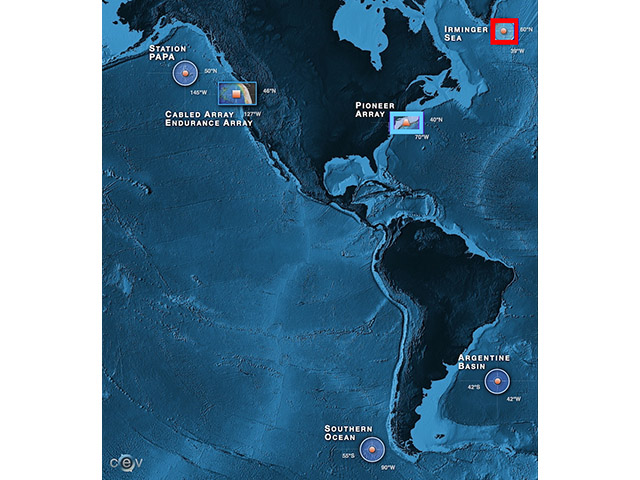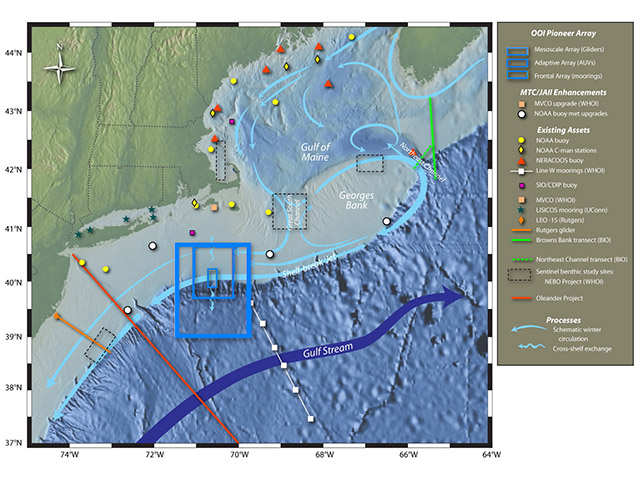Changes in Salinity with Depth Application
Your Objective
Use salinity with depth data to determine if there are relationships over time between two different regions of the North Atlantic Ocean.
- Make a prediction about what changes in salinity with depth you may observe across different parts of the ocean.
- Compare patterns in the data below to determine what and if there are relationships over time and/or space.
Zoom to:
Data Tips
When the site loads, you are able to see daily profiles of salinity data from the first two weeks of July 2015 from the Coastal Pioneer Array (Temperate Shelf) and the Global Irminger Sea Array (Polar Deep Basin) both in the North Atlantic Ocean. You can interact with the data by:
- Selecting a different amount of time to look at by choosing between, "1 week," "2 weeks," or "1 month."
- Selecting a different part of the year to explore the data in ways that interest you by moving the highlighted section of the bottom graph to the right or left.
- Zooming in and out of the data to look at different time scales that interest you by changing the width of the highlighted section of the bottom graph to be more or less than two weeks.
- Selecting to have the salinity or depth scales be the same across the two graphs, rather than determined by the available data (as it shows when the site loads).
As a note, the color denotes the time of year the salinity data are from (pink are from May 2015 through dark purple from February 2016).
Questions for Thought
- What is the overall range of salinity data you are able to observe in each graph?
- What is the overall range of depth data you are able to observe in each graph?
- What is the overall time range are you able to observe in each graph?
- What similarities and differences did you find in patterns of salinity with depth over time between these Temperate Shelf and Polar Plain locations in the North Atlantic Ocean?
- What other questions do you have about differences in patterns in changes in salinity with depth across different parts of the ocean from these data?
Background Information
Click on the images below to learn more about where and how the dataset above was collected.
Dataset Information
The data for this activity was obtained from the following profiling CTD instruments:
- Coastal Pioneer, Upstream Inshore Profiler Mooring (CP02PMUI-WFP01-03-CTDPFK000)
- Global Irminger Sea, Apex Profiler Mooring (GI02HYPM-WFP02-04-CTDPFL000)
Download CP02PMUI Download GI02HYPM
The above datasets were downloaded from the OOI data portal. Complete profiles of the instrument were identified and the profile closest to midnight (GMT) each day was saved. This reduced the overall temporal resolution (and size) of the final dataset but it preserved the raw variability exhibited in individual profiles and measurements.




